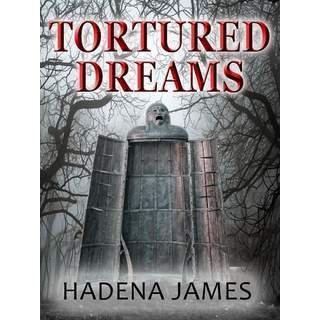R.M. Strong's Blog
July 16, 2016
Chained Guilt by Terry James
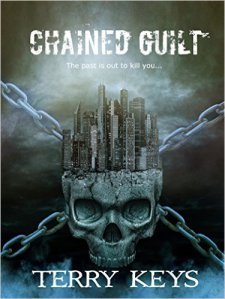 Chained Guilt by Terry Keys
Chained Guilt by Terry Keys$0.00 at time of publishing
Chained Guilt is the first in the Hidden Guilt series. It follows David Porter, a decorated Houston Police Department detective who, in this first-person account, claims to be one of the best serial killer hunters in the country, if not the world.
When Porter’s wife Miranda, a celebrated investigative reporter, is in a car accident–run off the road late at night under suspicious conditions–and her body is not found, it leaves him and their 15-year-old and a 5-year-old daughters wondering where she was and what could have happened. Only a few days later, everyone urged him to move on, so he beings making his plans, convinced as to what had happened. After making sure that the person he believed responsible for his wife’s disappearance spent the rest of his life in prison, he returned and they started At the funeral, a mysterious woman saunters into their lives. Six months later, Stacy has ingratiated herself into their lives and Porter decided to begin seeing her. That is when his life really started to fall apart.
The story and situations are adult in nature and are not suitable for children (not that the book was marketed in that direction). There is some language, but it seems forced and put in simply for shock value or to show that a character is really angry, rather than it being their normal way of speaking. (This includes a Vietnam vet Porter meets in Dubai.)
The transitions to differing points of view–Porter’s, the villain’s, and a handful of others’–can, at times, be jarring and without warning, but for the most part (the points mentioned below notwithstanding), the story runs rather smoothly, despite a number of typos and some eBook formatting issues.
There is some mention of God and church and praying, and the characters at points claim to be Christians, but there is little evidence of it in any of their lives.
I try not to have spoilers in my reviews, but I may not be able to adequately express my feelings without revealing some pertinent details. If you do not want to read spoilers, now would be a good time to stop reading the review.
Are we good? Okay. Beware… Here be spoilers.
This book could not be more disjointed if it tried to be. There are about four different books smashed into one.
The prologue takes place in Russia, where the main character is, apparently, trying to take revenge on some Russian gangster who killed his brother. For a chapter, we are in some kind of spy thriller, not the mystery/suspense we had been expecting. After leaving a string of bloody corpses (but not getting his man), he leaves Russia and we never hear of this part of his life, or his brother (despite the fact that we do meet his parents), ever again.
All of a sudden we are transported to Houston, where we are at a grisly crime scene of a dead 8-year-old–the second child killed in Houston in such a manner in less than a month (see below), and we are thrust back into the mystery/suspense.
After Miranda’s disappearance, Porter heads off to Dubai where he James-Bonds his way through the streets of a foreign country (see below), killing and torturing everyone who gets in his way until he gets the guy he believes is responsible for his wife’s death. And there is something about human traficking that was never really fleshed out or adequately explained.
Six months after Miranda’s funeral, it become something of a wink and a nod to the reader and a commentary on unstable, abusive relationships. Stacy moves into the house with Porter and the girls and proceeds (with the readers’ full knowledge) to destroy their lives. Porter hardly goes to work any longer, maybe once every few chapters, and while he mentions Miranda’s disappearance a lot, there is absolutely no mention of Dubai or Russia, and the killer seems to have gone underground and no other children are harmed with no explanation as to why.
It’s like the author couldn’t decide what kind of book he wants to write.
The characters of the kids, the youngest in particular, are a bit unbelievable. Karen, the 5-year-old, oftentimes speaks as if she is 20 years older than she actually is–giving her father advice and comfort in the midst of everything, using language far beyond her age.
There is a torture scene in Dubai that is tired and contrived–water boarding and battery clamps on the nipples–all while standing around in an underground arsenal that would make the A-Team drool (more on Dubai later).
The relationship between Stacy and Porter was horrible. I had no sympathy at all for Porter during the last half of the book. His wife had only been gone for less than six months and he caved to his daughter’s pressure to get back into the dating scene. He, who presumably had been trained to spot the signs of an abusive partner, couldn’t see her advances as manipulative. He told her “no” or “let’s wait” and she didn’t obey, but he didn’t see that as what it is–rape. For someone who claims to be the premier hunter of serial killers in the country, for him not to be able to see what was happening is a little farfetched.
But the thing that really got me was the utter lack of research involved in writing the story. Porter calls two killings of children (while horrific) the work of a serial killer. A real detective (or anyone who has watched Criminal Minds or taken a course in Criminology) would know that to be classified as a serial, there has to be three or more killings.
Detective Porter takes his service weapon with him to Dubai (a Muslim country on the Persian Gulf) in order to apprehend the person he believes is responsible for his wife’s disappearance who is involved in some kind of human trafficking ring. However, the only luggage he brings is his carry-on, which means he snuck it past the TSA, and then international security, and then Customs in Dubai. Dubai is a sovereign nation that does not allow its citizens the same rights we have here. After leaving a string of dead bodies in his wake, when returning home with his tortured captive, the police captain tells him, “I know you did it, but I can’t prove it, so you need to leave the country.” This would not happen in Dubai–a place where married tourists can get jail time for simply holding hands in public. The police would not care about due process, they’d just throw Porter in jail and wait for the Embassy. And that arsenal mentioned above? That would be an even worse sentence.
The book is a good first final draft. However, there are too many things that made it a poorly-told final draft.


July 9, 2016
Elysium Dreams by Hadena James
 Elysium Dreams by Hadena James
Elysium Dreams by Hadena James$0.00 at time of of review
Elysium Dreams is the second in the Dreams & Reality Series by Hadena James. For my review of the first in the series, Tortured Dreams, just click here.
After returning the day before from an assignment to capture a serial killer, Dr. Aislinn Cain and her fellow US Marshals are sent to Anchorage, Alaska, where over 30 women have been skinned alive in under four months. He leaves the women hanging in a tree like a skinned moose or deer, and fashions the likeness of a hunter’s bow and arrow out of the still-warm flesh. The killer always seems one step ahead of the investigation and the Marshals and FBI in Anchorage need a fresh set of eyes to catch the killer.
Aislinn, who earned her Ph.D. in Midieval History, is a bit out of her depth, as there is no historical bent to these crimes, but she is useful to the team nonetheless. If nothing else, she is a magnet for serial killers and everyone, including Aislinn herself, knows that, sooner or later, the killer will have her in his sights.
We get to see another side of Aislinn in this book, and her continuing struggle with her sociopathy. Having jumped from one case immediately into another, she has not had the down time with her cousin-and-best-friend she requires to keep her from becoming, in her own words, a “monster.”
The story takes place about six months after the end of the first book, Tortured Dreams. Elysium Dreams, unlike some books in a series, picks up immediately where the characters left off at the end of the first book. There is very little background information given to help readers who have not read the first in the series catch up with the characters (such as explaining relationships between side characters, or even who Nyleena and Malachi–Aislinn’s only friends outside of work–may be).
The eBook formatting on Elysium Dreams is worse than Ms. James’ first book in the series Tortured Dreams. There are problems with the indenting on paragraphs (either too much or none at all), and there are places where punctuation and other grammatical issues come into play, making the reader pause. The title, also, seems to point to a stretch (at best) and a lack of historical research (at worse). The characters are talking about ancient hunters amid the case files and Aislinn mentions that Elysium–the ancient Greek version of Heaven–is for hunters… Which is not entirely accurate to the mythology (and something a character with a doctorate in history–even Midieval history–would have known).
Elysium Dreams is a little less believable as a contemporary than the first book in the series, Tortured Dreams, simply because of the numbers involved–over 30 women die in less than 4 months before the US Marshals team is brought in. That being said, the killer’s chosen method to evade detection is ingenious and it is 100% believable as an evasion tactic. The reader is introduced to the killer in the first handful of chapters (while it is pretty common in the genre, it was not used in the first book). The killer’s slip into insanity, in my opinion, was a little over-done, but it made for a few nail-biting moments at the end of the book.
All in all, though, Elysium Dreams is a fun, enjoyable read and a great sequel to Tortured Dreams.


July 2, 2016
Criminal Psychology: Understanding the mental disorders that power the psychopathic behaviour through criminal profiling
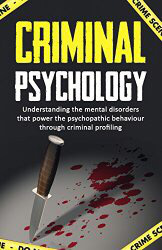 Criminal Psychology: Understanding the Mental Disorders that Power the Psychopathic Behavior Through Criminal Profiling by Eric Cruise
Criminal Psychology: Understanding the Mental Disorders that Power the Psychopathic Behavior Through Criminal Profiling by Eric Cruise$2.99 at the time of publishing
I had high hopes for this book, I really did. I wanted it to be everything it said it was. I found it during one of its free days on Kindle Unlimited and, as I am currently working on a new mystery/suspense crime series, I downloaded the book with the hopes that it would be useful for character development. The book description inferred that it was a more academic-leaning text.
Unfortunately, I was sorely disappointed, and I am chalking this one up to caveat emptor.
The author starts out by congratulating readers on downloading the book, which should have been my first clue that I was not dealing with a scientifically-leaning book. (Note: Nowhere in the book or on Cruise’s Amazon Author Page does he claim to have any kind of a background in criminology or psychology. I do not want anyone to think that the author is passing himself off as anything he is not.)
After a lengthy legal disclaimer, the book begins well. The first chapter goes over the history of criminal psychology, touching on theories ranging from, in modern vernacular, “the Devil made me do it,” to Freud’s theories and others’. The book then settles on brain abnormalities as the cause for the vast majority criminal behavior in the world–everything from serial traffic infractions to serial murder.
The author then goes on to give “helpful” hints on how to spot criminals in normal, every-day settings. Unfortunately, these fall into just about every cultural and cartoon stereotype out there–everything from “Jekyll & Hyde characters” to wearing baggy clothing and “thirsty eyes.”
When making all of these claims, the author never cites any studies to back up his hypotheses. There are no crime statistics to back up the theory that if you spot someone wearing baggy clothing, he is most likely concealing a weapon. No scientific study about how psychopaths are unable to read facial cues. Sometimes, this can be almost infuriating. An example: One study mentioned in the book involved recording young children’s responses to sounds, specifically unpleasant ones. The study found that 8% of the children (age 3 or younger) did not respond to unpleasant sounds in the typical fashion. The researchers, we are told, came back to the same group when the children were adults and found that about 8% of the now-grown children had some kind of criminal record (anything from traffic tickets to murder), but there is no link offered in the text or in an appendix allowing a reader to see if the 8% of adults with a criminal record were the same 8% of children that didn’t respond to unpleasant stimuli or if the figures were simply coincidence.
The book does end with an almost-helpful analysis of the mental health situation in the US and suggests that the lack of proper mental health treatment could have a great impact on the criminality of the mentally ill. Except, by this point, the author’s language has devolved from using the term psychopaths to simply the derogatory term “psychos.”
The book is so-so as a generalized overview of criminal psychology and (in the loosest sense) profiling. If you are looking for something more in-depth or scientific, however, this would not be anything more than half an hour of fluffy reading.


June 25, 2016
Tortured Dreams By Hadena James
Tortured Dreams by Hadena James
$0.00 at time of publishing
Tortured Dreams is the first novel in the Dreams and Reality Series by Hadena James.
The book, and series, follows the exploits of Dr. Aislinn Cain, a sociopath with a Ph.D. in the Middle Ages (with an emphasis on European torture of the time period) and with the worst luck when it comes to serial killers. They are attracted to her like flies to… Well, you know. She even has a fan club in the Maximum Security prison where her own brother is incarcerated.
After being released from the hospital after an attack in her home, where she was forced to kill her attacker, Aislinn is met by two representatives of the US Marshals. The two are part of an elite task force that hunts down serial killers, and they have one that has been eluding them for months. The bizarre nature of the killings–drawing and quartering, impalement, and thrust into iron maidens–made the Marshals seek out the only expert in torture in the States.
Now, Aislinn–who has already survived two attacks by serial killers in the past and is currently being stalked by another–is flown home to Kansas City, Missouri and then to Chicago in order to help the Marshals find the serial killer before he strikes again.
Tortured Dreams is fairly well-written, though some proofreading and copy editing is needed in places–homonym errors, typographical issues, errors in cliche’d phrases, etc. Not quite enough to detract from the story, but another round with the fine-toothed comb wouldn’t be bad. The eBook is well-formatted and free from a lot of the formatting errors normally found in ebooks.
The story itself was interesting and the characters believable, for the most part. Aislinn is quite comfortable with her sociopath label, and the team members she works with are as well. She knows she is “broken” and doesn’t apologize for her lack of empathy. However, there are a few inconsistencies I found within the story.
While she does seem to lack a bit of a self-preservation instinct at times (jumping into Lake Michigan in November after a fleeing suspect), it is made abundantly clear that she is able to take care of herself if attacked (she killed a her first serial killer when he abducted her when she was 8 years old). She doesn’t make friends easily (she only has two at the beginning of the book), but seems to easily trust her new co-workers. These don’t, however, detract from the story and seeing an evolution in the narrator helps us non-sociopaths get into her head a little better.
The only jarring bit of the story is the profanity. There are only a couple instances of swearing (less than 10, I would say, throughout the entire book); and where it is present, it seems natural in its context. However, when one factors in that we are reading about ex-military and a group of “broken” individuals hunting someone who can tie a woman’s four limbs to four different animals, and watch as the animals literally tear her limb from limb… The swearing still seems forced and placed in the story simply for shock value.
All in all, Tortured Dreams is a good read, and I highly recommend it. Ms. James has done a wonderful job developing these characters for future adventures (there are 11 books in the Dreams and Reality Series).


November 1, 2014
Guy Fawkes: Or, A Complete History of the Gunpowder Treason, A.D. 1605
 Guy Fawkes: Or, A Complete History of the Gunpowder Treason, A.D. 1605 was written in 1839 by the Rev. Thomas Lathbury of the Episcopalian Church (the Church of England). In reading this book–I downloaded the free Kindle version created by Public Domain Books–one has to keep the writer’s worldview in mind, otherwise it may cause you to stop reading.
Guy Fawkes: Or, A Complete History of the Gunpowder Treason, A.D. 1605 was written in 1839 by the Rev. Thomas Lathbury of the Episcopalian Church (the Church of England). In reading this book–I downloaded the free Kindle version created by Public Domain Books–one has to keep the writer’s worldview in mind, otherwise it may cause you to stop reading.
That said, the history of the Gunpowder Treason (which, only takes up about 1/3 of the book–fair warning for the reader) is good. Dates and the order of events are fairly detailed and can be supposed to be accurate. There is very little biographical information on the principle players other than their actions from the time right before they formed the plot to the time they were executed.
Most of the information from his book, Lathbury tells us, comes from papers uncovered in his time from the British archives detailing the confessions and trials of the accused (and admitted) plotters.
Quite a bit of the book, however, is focused–sometimes vitriolically–at the Roman Catholic Church and the Pope. Lathbury basically places the entire plot at the feet of the Popes who reigned over the Catholic Church in the years leading up to 1605. Lathbury himself is a staunch anti-Catholic, and he does nothing to hide his bias.
If you are looking for more detailed, in-depth information about the Gunpowder Treason, the Fifth of November, and Guy Fawkes. It is, like all books and all authors, a product of its time. It has its place (they are over 150 years closer to the event than we are today, and we can get a slightly better sense of the mentality of the time) and I did learn quite a few things about the Treason and its significant players. However, I would not recommend this book, free though it is.


June 14, 2014
No Escape in Sight by Laurie Penner
 When Beth Robertson’s new landlord “accidentally” runs into her while Beth is out with her teenage daughters, she would have never guessed that the next week and a half would change her life. She had never had much luck with men—her only two serious relationships had been violent, abusive ones—so when Mrs. Sanders introduced her to her prodigal grandson Luke, Beth politely got out of there… quickly. So quickly that she left without her older daughter, Emily, with whom she had just had another fight, confident that Emily had gone to a friend’s house to cool off.
When Beth Robertson’s new landlord “accidentally” runs into her while Beth is out with her teenage daughters, she would have never guessed that the next week and a half would change her life. She had never had much luck with men—her only two serious relationships had been violent, abusive ones—so when Mrs. Sanders introduced her to her prodigal grandson Luke, Beth politely got out of there… quickly. So quickly that she left without her older daughter, Emily, with whom she had just had another fight, confident that Emily had gone to a friend’s house to cool off.
Emily, however, did not come home that night, and the friend didn’t know where she could be.
Just as she begins to panic, good-looking Luke is conveniently there to help her. Turns out, Luke owns a private investigation business and is good at finding people. Neither of them can deny the chemistry between them after just a few moments together. However, because of her history, Beth has sworn off men in general, and Luke isn’t a Christian, which makes him even more out of reach. After a couple of false-starts and misinterpretations, Beth finally explains her reluctance. Her first husband—and the girls’ father—had been great at first, but had been an abusive drunk. When he was killed in a boating accident, her next relationship was the more of the same. When Beth finally worked up the courage to break off that relationship—by moving to a place in northern California where she didn’t know anyone and no one knew her—he vowed revenge.
When Emily is spotted the next week in southern California, Beth, her younger daughter Bonnie, and Luke are off in a car headed south together.
Emily, meanwhile, is where she wants to be, with a strange man sent by her paternal grandmother, driving her down to LA. She dubs him “Mr. Nice,” and he turns out to be anything but.
The story is told from three points of view, Luke’s, Emily’s, and Beth’s and is mostly free from spelling and grammatical errors. However, many trademarked names—names of restaurants, for instance—are italicized when they should not be. Also, all of the terms of endearment (honey, dear, etc.) are capitalized. Not huge mistakes, of course, but annoying. These mistakes are consistent throughout the book.
I liked the spirituality of No Escape in Sight. Beth’s inner conflict—trying to forgive herself over issues with Emily—resonated and was true of any parent. The fuddy-duddy-ness of Beth’s over-conservative Christian landlord was dealt with properly and with respect. The Christian rule-of-thumb about “do not yoke yourself to an unbeliever” was respected, although that hadn’t helped Beth much in the past as she had met both of her abusers in church.
However, I found two things incredibly unbelievable in the story. First, Emily. I get that a teenage girl can be mad at her mother and plan, with adult help, to run away to reunite with family members far away. However, I don’t know of many 15 year olds in this day and age who think it would be a good idea to get into a car with a stranger in the first place, let alone call him “Mr. Nice.” Children today are taught from the time they can walk to not go off with strangers, especially those who say “Your mom (or, in this case, Grandma) sent me to get you.” When things started going wrong, Emily did not try and get help—even in public, with other people around, she did not scream—but went along obediently. When we find Mr. Nice’s true identity, the fact that Emily would call him that becomes even more unbelievable.
Secondly, the romance. Sure, I get the need to have some kind of interpersonal relationship between two of the main characters, but does Beth really need to be vacillating between picking china patterns and wanting Luke out of her life completely while her daughter is missing and she doesn’t know if Emily is even dead or alive? Most of the inner dialogue is focused not on Emily or where she might be, but on Luke and how cute he is and how close they are getting and how dare he talk to an ex-girlfriend. It’s almost as if the story cannot make up its mind. Is it a mystery, is it a romance, or is it a suspense? If my child was missing, I would drop everything to look for her, not wait until spring break when you had vacation time coming from work to go look for her.
The story is quick, and the twist is not overly predictable. I was able to read the book in a few hours. I was given the book by the author in exchange for an honest review.


June 7, 2014
Sasquatch by Roland Smith
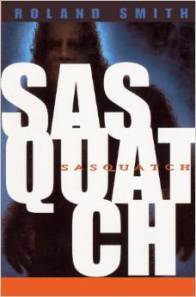 School reading has changed a lot since I was a kid. Gone today are most of the “fun” reading assignments, abandoned in favor of non-fiction. Sure, the school library still carries a large section of fiction, but most reading the schools encourage now is non-fiction.
School reading has changed a lot since I was a kid. Gone today are most of the “fun” reading assignments, abandoned in favor of non-fiction. Sure, the school library still carries a large section of fiction, but most reading the schools encourage now is non-fiction.
Except for the Battle of the Books. Some states, such as my home state of Oregon, encourage kids from third grade to high school to read the same fiction books and then answer trivia questions about them, competing with other classes and other schools.
Sasquatch, by Roland Smith, is one of those books. As Oregon Battle Of the Books (OBOB) liaison for my son’s school I felt the need to read all of the Grade 3 – 5 books so that I will be able to properly help kids find books they want to read. I picked the perfect book to start out with.
Fourteen-year-old Dylan Hickock knew that something was up when he and his dad put his mom on an airplane to Egypt. His dad had come home from a camping trip on the slopes of Mount Saint Helens… different a few months before. He always “tinkered” (one might call it, “obsessed”) over one subject or another, learning everything there is to know, but when Dylan’s mom left the country to finish her PhD in Egyptology, life got interesting.
Bill Hickock drags Dylan to a B.F.I. (Bigfoot International) meeting and everything changes. Turns out, Bill’s life was saved by what he believed was a Sasquatch on that camping trip. When B.F.I. brings in someone to try and hunt down and kill the Bigfoot that Dylan’s dad had seen, Bill feels like he owes the Sasquatch and joins up in an attempt to thwart B.F.I.’s plans.
When Bill leaves with the eccentric and dangerous B.F.I. team, Dylan heads up the mountain with Buckley Johnson, a friend they meet along the way. Buck, who has his own secrets, also wants to keep the Sasquatch safe. The three of them soon discover, though, that they don’t only have to contend with the team from B.F.I., but also an angry, ash-spewing volcano. Helens is waking up again.
It is always fun to read a book set in your home state, and your home city. Sasquatch is set in Portland, Oregon, and the slopes of Mount Saint Helens. Smith also is able to tie in the local D.B. Cooper mythology in a fun and interesting way.
I would highly recommend this book to anyone looking for a quick read. At 188 pages, it only took a few hours from start to finish, and I had to force myself to put the book down in order to get sleep. It is perfect for the Grade 3 – 5 age group for which it was chosen. It is published by Hyperion Books for Children and is mostly free from grammatical and punctuation errors, although I did find two.
Some of the technology mentioned in the book is dated, but is, of course, all appropriate for a book written in 1998. All in all, Sasquatch is a fun read and is a good introduction for young Oregonians to some of the local color.


May 31, 2014
Moses: Steps to a Life of Faith
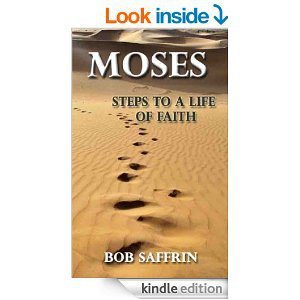 There are some books that make a bad first impression. You continue read to see if they’re going to get better, because every author has dry spells, and when the book takes off it can change your life, whether fiction or non-fiction. In some cases, that hope for improvement becomes desire, and ultimately despair. Moses: Steps to a Life of Faith is, unfortunately, one of those books.
There are some books that make a bad first impression. You continue read to see if they’re going to get better, because every author has dry spells, and when the book takes off it can change your life, whether fiction or non-fiction. In some cases, that hope for improvement becomes desire, and ultimately despair. Moses: Steps to a Life of Faith is, unfortunately, one of those books.
Please indulge me a bit of background. I’m currently writing a biblical historical fiction on the Israelite Exodus from Egypt. Moses, of course, is a fairly large part of the story and I was hoping to learn something new about him by reading a book about his life and his journey. I went into the book with high hopes, which were promptly dashed in the prologue. Going into a book such as this, you want to know why the author wrote the book, and why you should listen to them. You want to know that they are at least somewhat of an expert in the field if you’re going to spend the time learning from them. The author, Bob Saffrin, never lists any qualifications, academic or otherwise, for writing the book other than what basically boils down to “I’ve been reading the Bible since I was in my 20s. Oh, and I taught this lesson before to pastors in India.” (No additional qualifications, such as a Christian college education, a pastorship, or even lay leadership, are listed on his website.) At the end of the book, no bibliography mentioned. There are no footnotes listed for the historical data (more on that later).
But, I read on, hoping that I would be able to glean something useful for my own book, as well as something I could apply to own life.
The book follows the life of Moses from birth to death. It is in this first chapter (really a prologue) of Moses’ life that the only non-biblical source of information mentioned. Saffrin paraphrases the Jewish historian (and undisputed traitor to his people) Josephus. This would be fine, but Josephus’ Antiquities of the Jews is given the same historical and spiritual significance as biblical sources and is referred back to many times throughout the telling of Moses’ life. As Josephus (and Saffrin) tells the story, Moses’ father was given a vision when Moses was three months old which showed the father, among other things, his son’s destiny.
Moses, we are also told many times, knew from his parents his destiny to lead the Hebrew people out of bondage. None of this is supported in either the Exodus story, nor anywhere else in Scripture, yet this Jewish oral history is given the exact same weight—moreso, it seems—as biblical accounts.
Saffrin makes much ado about Moses turning down the throne of Egypt multiple times. This would have never happened. Moses, while he was an adopted prince of Egypt, would have never been eligible or even asked to take the throne because he was not Egyptian. Saffrin brings in many historical details about Egyptian culture and Moses’ royal family, but never once names names (and very rarely gets the details correct). He claims that Moses’ adoptive grandfather was in poor health, his adoptive mother was young, that when Moses was 20 his adoptive grandfather died, that Moses refused the throne at that time, the only reason Moses was adopted was to give the royal family an heir, etc. Not one member of the royal family is named to give us an historical reference to even have an idea of when the Exodus took place. However, the worst error Saffrin makes is claiming that royal lineage in Pharonic Egypt was passed down through the mother. This is utterly old information, and has been debunked many times in the last 50 years.
In all honesty, this is when I started wanting to throw my Kindle across the room and stomp on it until it was dead. The 10 Plagues of Egypt were completely glossed over, as was most of the 40 years in the desert.
The rest of the book is just okay. There is some denominational theology in there that I didn’t necessarily agree with, but would not bother other readers. The author makes some great leaps in logic and theology I don’t agree with, but others might. However, all of his assertions are based upon Josephus’ crumbly foundations mentioned above.
The writing is dry and while it is obvious that the author is excited about this information, he failed miserably from the first chapter on to make me excited as well.
The book itself is edited poorly. I will gladly admit that it is better-edited than some other indie books I have read, but there are quite a few commas and quotation marks missing or added, uncapitalized proper nouns, quotation formatting issues, etc. Less important but no less annoying was Saffrin’s insistence of calling the Hebrew people “Jews,” a term that was not applied to the children of Israel until Roman times.
In all, I cannot in any good conscience recommend this book. If you are at all interested in accurate biblical history, run away as far and fast as you can.


February 22, 2014
To Be Sane by Shaina Cilimberg
 To Be Sane is the third book in Cilimberg’s Deep River High series. While the secondary characters we have come to know—Josh, Lydia, and Emily—are there, this novella focuses on two new freshmen and Amanda, the now-sophomore that Kirk Williams spared during the school shooting in Perfect Forgiveness (reviewed here).
To Be Sane is the third book in Cilimberg’s Deep River High series. While the secondary characters we have come to know—Josh, Lydia, and Emily—are there, this novella focuses on two new freshmen and Amanda, the now-sophomore that Kirk Williams spared during the school shooting in Perfect Forgiveness (reviewed here).
The school shooter from last year has been sentenced and is serving his time in Juvie, but the bullying hasn’t stopped. Selena and Andy come to Deep River High from middle school, joining the hodge-podge of public high school. Selena and Andy both struggle with different things, making high school difficult. Selena suffers from OCD and Asperger’s Syndrome and Andy is shy and sometimes stutters (more on that below). Both also struggle with strange, unbidden thoughts and suicidal tendencies throughout the book.
Ms. Cilimberg has finally taken the advice, “write what you know.” She suffers from OCD and Asperger’s, which makes Selena’s internal commentary more than believable. She has also spent many years now with the secondary characters, and one can see their growth as characters and as teens.
The story is told from only three points of view (really, only two, but Kirk gets his own chapter in the middle of the book). While the character isn’t necessarily always obvious at the beginning of the chapters, the book usually just alternates chapters, so it’s fairly easy to know who’s head the reader is in.
Unfortunately, like the other books in the Deep River High series, this book desperately needs an editor and more research.
Selena is one-quarter Hispanic (her grandmother is of Mexican descent or from Mexico, it is unclear). Selena loves her grandmother’s heritage and because of that she mixes Spanish words in with her English dialogue. There is only one problem. Any first-year high school Spanish student will be able to tell you that Cilimberg (and, by extension, Selena) uses Spanish incorrectly. While the words are translated properly, it is simply a Spanish-English dictionary translation, without any thought to how a native speaker would use it. For example: When Selena is speaking to Andy, she uses the word “Tu” for “You” (“Tu okay?”) when the proper word would be “Estas” (You are/Are you). For anyone with a “working knowledge” of Spanish, this lack of proper research and editing for such an integral part of a character’s personality is very distracting to say the least. (As a personal pet peeve, the Spanish words in the book are not italicized, making it sometimes difficult and jarring to follow along.)
Andy, supposedly, suffers from a stutter when he gets nervous (like, when meeting new people). Unfortunately for the story and continuity, however, Andy only has a handful of stuttering episodes, and only one or two when he is with Selena (a new girl he ends up realizing he likes). A more realistic scenario would be Andy not being able to get a word out when he’s around her, but that’s not the case. From their very first meeting, the only time we see Andy stutter when with Selena around is when he gets a cyber-bullying text message.
Also, if there are people cyberbullying Andy, why can’t he just block them on Facebook and not answer/read their text messages? Both are very easy to do, any teen could very quickly figure it out, but apparently, it never crosses Andy’s mind.
Finally, the climax is very, in my opinion … anticlimactic.
There are also some very glaring formatting issues in the book, and many typos, both which would have been remedied by having an editor and reading the book in Kindle format before publishing.
It is obvious that Ms. Cilimberg has a heart for teens, and wants to present them with relatable characters that are as flawed as they are. However, that does not make up for the poor execution of the story.


January 25, 2014
Days of Elijah: A True Story by Eliza Earsman
 Before I begin the review, a small note to Ms. Earsman: No, as much as you would like to believe otherwise by the end of the review, I am not, nor have ever been, a Freemason (or the female equivalent). I was born and raised in the Free Methodist Christian denomination. While Masonry was prevalent in the Methodist church in the Americas when my tradition was excommunicated from the Methodist church, one of the “Frees” of Free Methodism is freedom from secret societies, specifically the Freemasons.
Before I begin the review, a small note to Ms. Earsman: No, as much as you would like to believe otherwise by the end of the review, I am not, nor have ever been, a Freemason (or the female equivalent). I was born and raised in the Free Methodist Christian denomination. While Masonry was prevalent in the Methodist church in the Americas when my tradition was excommunicated from the Methodist church, one of the “Frees” of Free Methodism is freedom from secret societies, specifically the Freemasons.
Eliza Earsman is Scottish-born and raised. After a difficult childhood, she married and had two daughters of her own. Her marriage, as does many, fell apart, and she battled depression for a few years. But it wasn’t until her 40th year that things began happening.
Ms. Earsman grew up and lived in Dumfries, Scotland, home of the headquarters of the Scottish Rite of Freemasonry. Her family, for generations, had kept themselves from the influences of and intermarrying into Freemasonry, despite it being everywhere around them. The author’s great-grandfather had prophesied (and, the author claims, had left stipulations in his will and testament to the effect) that the fourth generation of his female line would bring about the end of Freemasonry, and should be given her inheritance in her 40th year.
After Ms. Earsman turned 40, she began to see harassment from the old families in Dumfries. The local Masonic lodge, apparently, also knew of the prophecy. Thus, with a few improper questions at her job in a nursery started Ms. Earsman on a journey that would take her around the physical and spiritual world.
I will not comment on my opinion of the veracity of Ms. Earsman’s statements. That is up to the reader to decide. My review is specifically based on the quality of the book as a piece of non-fiction. However, there are a few things that I found that could have been done better.
While some information has been extensively documented (to such an extent to list the home addresses of some of the Masonic people she has encountered), some information is missing. While she hints that the bombing of Pan Am 103 was Masonic in origin, other than mentioning that the local chapter had opened its doors to some of the investigators, no proof was given. Ms. Earsman is quite adamant that the Dumfries Masonic lodge stole the inheritance from her great-grandfather, but offers no proof. There is no mention of how much was stolen, the language of the will, or even how the money might have been stolen.
In the preface and even on the cover, Ms. Earsman claims that the Scottish Rite of Freemasonry has tried to kill her to silence her. However, I only found two instances of her life being in danger. One of these was an attempted suicide during her battle with depression, and another instance when she was living on the streets of London. The author even states that neither of these were because of Masonic influence. The author was institutionalized at one point, but there were no attempts made on her life mentioned.
I found the story extremely disjointed. There are a great many facts which—while I understand what the author was trying to do, giving her story more credence—are extraneous and unneeded. If they had to be included, a better place would be in footnotes rather than in the text. The events described in the book do not always run in order, or make a difference in the narrative.
Ms. Earsman has also written a movie script as a companion to the book, and quotes from the script three times in the book. Each of these times, I found, added nothing to the narrative and don’t make much sense even if they did.
Do secret societies exist? Of course; and some of them are less secret than others. In our Western world, is it less what you know and who you know? I do not think that is any question. Does Ms. Earsman make convincing arguments about the Freemasons waging war on the public in general and her in particular? I will let the reader decide, but in my opinion, the narrative would only benefit from a good work-over by a professional editor to help with continuity.



